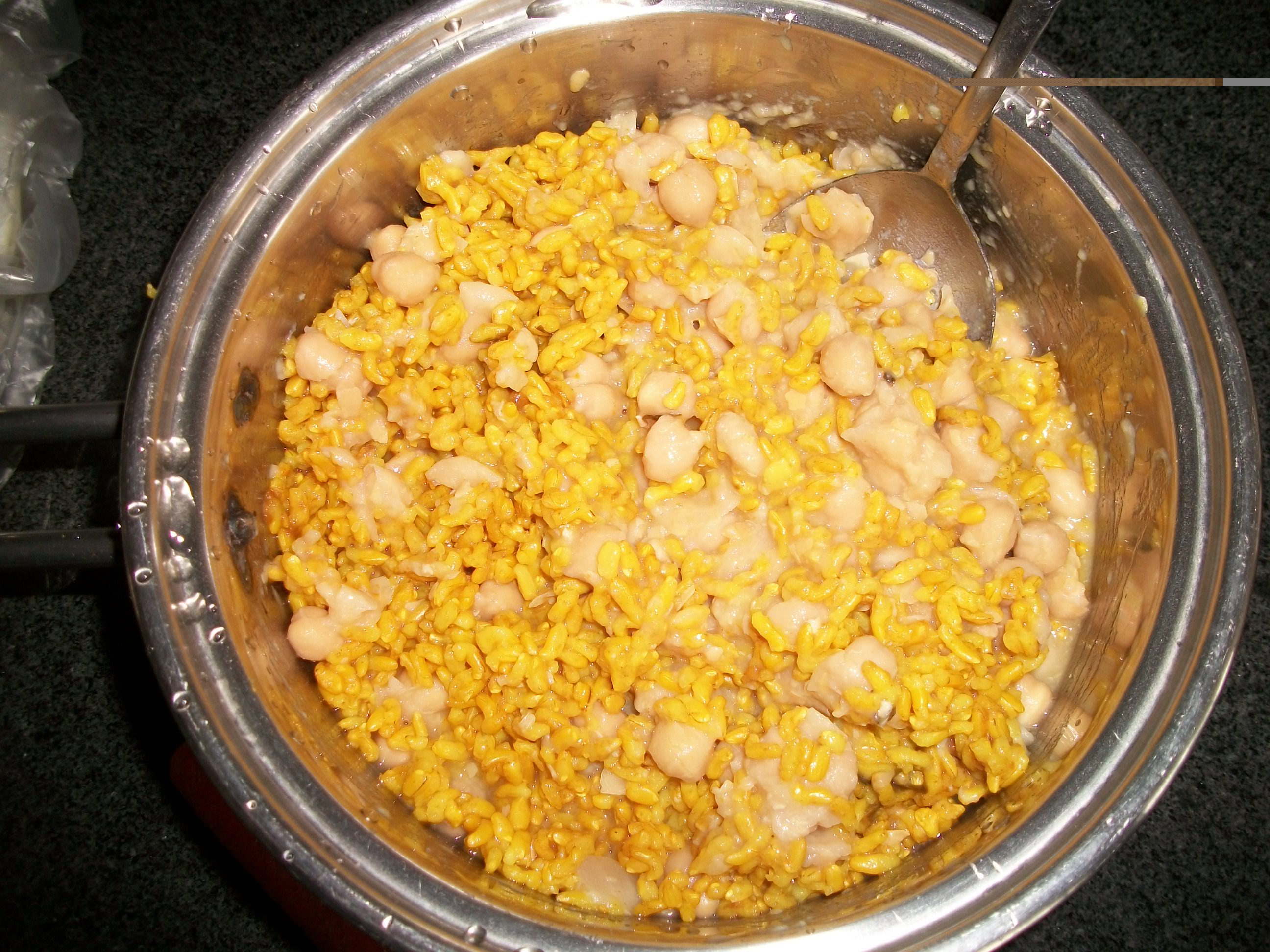Ingredienti
- 2 cups short or medium brown rice
- 5 cups spring water
- 1 tsp turmeric powder
- ¾ cup chick peas, washed, and soaked overnight
- 1 onion, diced
- 2″ piece of kombu
- 1½ Tbsp white miso
- Pressure cooker
- 2 tazze di riso corto o medio marrone
- 5 tazze di acqua di sorgente
- 1 cucchiaino di polvere di curcuma
- ¾ tazza di ceci, lavati e inzuppati per una notte
- 1 cipolla tagliata a dadini
- 2 "pezzo di kombu
- 1½ cucchiaio di miso bianco
- Pentola a pressione

Preparazione
Put the kombu on the bottom of the cooker, add the onions and cover them with a little spring water, bring to a boil and let it cook 5 minutes until the onions have become translucent (to release their hotness). Add rice and chick peas on top of the onions. Pour the spring water along the walls of the cooker, trying not to disturb the rice and chick peas. Add 1 tsp of turmeric powder to the cooker. Close the pressure cooker, bring to a boil with a high flame. When the cooker starts to whistle, lower the flame, add a flame deflector under the cooker. Cook for 1 hour. Remove from heat. Let the pressure go down undisturbed, and open the cooker. Mix the white miso with some spring water, pour it into the cooked rice and peas. Stir and let simmer 5 to 10 minutes, adding a little spring water if it’s too dry. Serve.
Mettere il kombu sul fondo del fornello, aggiungere le cipolle e coprirle con un po 'di acqua di sorgente, portare ad ebollizione e lasciar cuocere 5 minuti fino a quando le cipolle diventano traslucide (per rilasciare la loro piccantezza). Aggiungere riso e ceci sopra le cipolle. Versare l'acqua di sorgente lungo le pareti del fornello, cercando di non disturbare il riso e i ceci. Aggiungere 1 cucchiaino di polvere di curcuma al fornello. Chiudere la pentola a pressione, portare ad ebollizione con una fiamma alta. Quando il fornello inizia a fischiare, abbassare la fiamma, aggiungere un deflettore di fiamma sotto il fornello. Cuocere per 1 ora. Togliere dal fuoco. Lascia che la pressione scenda indisturbata e apri la cucina. Mescolare il miso bianco con un po 'di acqua di sorgente, versarlo nel riso cotto e piselli. Mescolare e lasciare cuocere a fuoco lento per 5-10 minuti, aggiungendo un po 'di acqua di sorgente se è troppo secco. Servire.